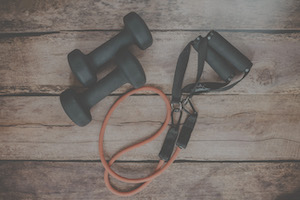Tube effective fishing tool
The soft plastic tube is one of fishing’s more effective soft-plastic profiles.
From tiny tubes aimed at panfish, to magnum-sized versions made to trigger the interest of muskies and northerns, tubes are available in a wide range of sizes. The most common tube is the three- to four-incher, perfect for medium-sized gamefish like smallmouth and largemouth bass.
Here are a few tube thoughts — in both rigging and application — to consider this season:
•
Rigging — The standard rigging for a tube body is to run an insert-style open-hook jighead up inside the bait, pushing the jighead tight to the inside of its head, and then forcing the line tie out through the body.Such rigging provides a head-first descent with little spiraling. Alternative riggings provide the fish with different looks, ones that can result in added bites.Before getting into rigging and application options, though, there are other details that can make tubes more effective.“When I take a tube bait out of the bag the first thing I do is roll it over a hard, flat surface,” accomplished bass angler Deron Eck noted. “This takes some of the glare off the bait, softens the plastic, and removes excess salt.“I separate the tentacles, and pluck out any bad ones. I’m also a believer in dipping the tail in dye. No matter the color of tube, I dip it in a chartreuse dye, which adds contrast to the bait.”To modify the action during the fall of the jig, Eck will adjust the depth at which he’ll insert the jighead. Holding back a quarter inch or so gives the bait a slower, more horizontal fall, and can increase the spiral effect.Alternative jigheads also give the tube a different look. During the past season, one of Eck’s more effective tube setups was one in which he employed a Shaky-style jighead.“I use a Shaky jighead, with the screw-lock, the kind designed for a Shaky-head worm,” Eck said. “Just run the screw-lock into the head of the tube body, and rig the hook Tex-posed. It stands the tail straight up as you drag it along the bottom. I’ve caught a ton of fish on a tube since I started using this setup.”Eck said to use a Shaky head with a 3/0 hook for a three-inch tube; for a four-inch tube he increases the hook size to 4/0. While the screw-lock does a decent job of holding to the thin body of the tube, when pull-outs become a problem, he forces a small piece of plastic worm the whole way up inside the body, providing “meat” for the screw lock to sink in to.Longtime Lake Erie smallmouth bass guide Terry Jones uses a football style jighead to give a tube the beefed-up look of a round goby, an unwelcome exotic species that’s well established in Lake Erie, but nonetheless one that’s become an important food fish for Erie’s bronzebacks.Jones said to get this “fathead” look, wet the football head, and twist it as you insert it to prevent from tearing the jig body. This is especially important when using the larger (often ½ ounce or more) jigheads needed to bump bottom along the deep ledges home to Erie smallies.•
Application – Tubes lend themselves to a variety of fishing situations. One of my favorite ways of fishing a tube in a flowing river situation is to drift-n-glide it.When gamefish like smallmouth bass and walleyes are active, they’ll hold in shallow feeding lies, and will react well to moving baits like swimbaits, jerkbaits and spinnerbaits.When they’re less active, they’ll repose in slightly deeper water, where they’ll often still respond to a bait, though they’ll be less included to chase one down. Here’s where the drift-n-glide comes in.Using a tube body rigged on a light insert jighead, make short casts out into moderately deep runs and pools as the boat drifts with the current. Maintain a rod position of around 10 o’clock, which allows you to work the bait and maintain a fairly tight line, while still having the room to make a hookset.Use the rod to impart a slight up-and-down jigging motion, while taking in enough line with the reel to maintain contact with the tube jig. The idea is to glide/hop/drag the jig on or near the bottom as the boat drifts along. This presentation shows a non-aggressive easy-to-eat bait, while efficiently covering lots of water.Bass-wise, tubes are thought of more as a smallmouth than largemouth offering. But rigged Texas-style with a bullet-shaped slip sinker, a tube body is ideal for throwing a changeup to green bass holding along a weed edge, ones more accustomed to seeing a plastic worm or flippin’ jig.The same thing goes for Carolina-rigging. Instead of using a worm, or some type of creature bait, substitute a tube body behind the heavy, bottom-feeling setup of a Carolina rig. It’s ideal for checking out rocky or stumpy cover in the 15 to 25 foot range.Jeff Knapp is an outdoors columnist for the Butler Eagle














